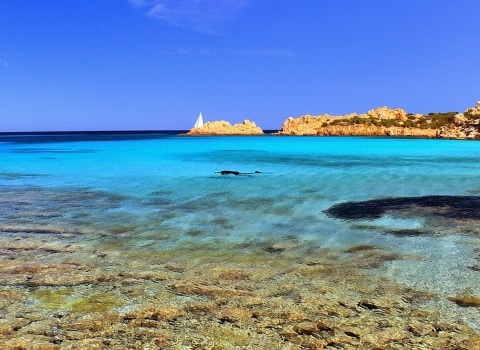What Makes Ischia So Different from the Mainland
Off the coast of Naples, things to see in Ischia begin to appear slowly. The island rises from the sea with a kind of quiet confidence. No fanfare. Just layers—sea, rock, villages tucked into the hills. Some come for the thermal springs, others for the beaches, or maybe just to pause somewhere that still moves at its own pace.
Among the top things to see on Ischia island, a few things stand out. The water, of course—clear, gentle, sometimes green with sunlight. Old stone towers, half-watching the coastline. Trails that wind through chestnut forests or up volcanic ridges. There’s no single way to approach it. Just a sense that the island holds more than it shows at first glance.
Whether it’s Roman ruins half-sunk into the landscape, or a long afternoon in a garden that smells of citrus and heat, Ischia doesn’t demand. It offers. And for those who let it, something lingers.
Starting from Naples? A good idea. A Naples tour guide can open the first chapter—stories, layers, a different kind of energy—before the ferry slips away toward the island.
1. Explore the majestic Aragonese Castle
Rising from a rocky outcrop and linked to Ischia by a slender stone bridge, the Castello Aragonese feels like it’s been watching the island for centuries. Built in the 5th century BC, then reshaped countless times, it carries the weight of battles, sieges, and monastic quiet—all etched into its walls.
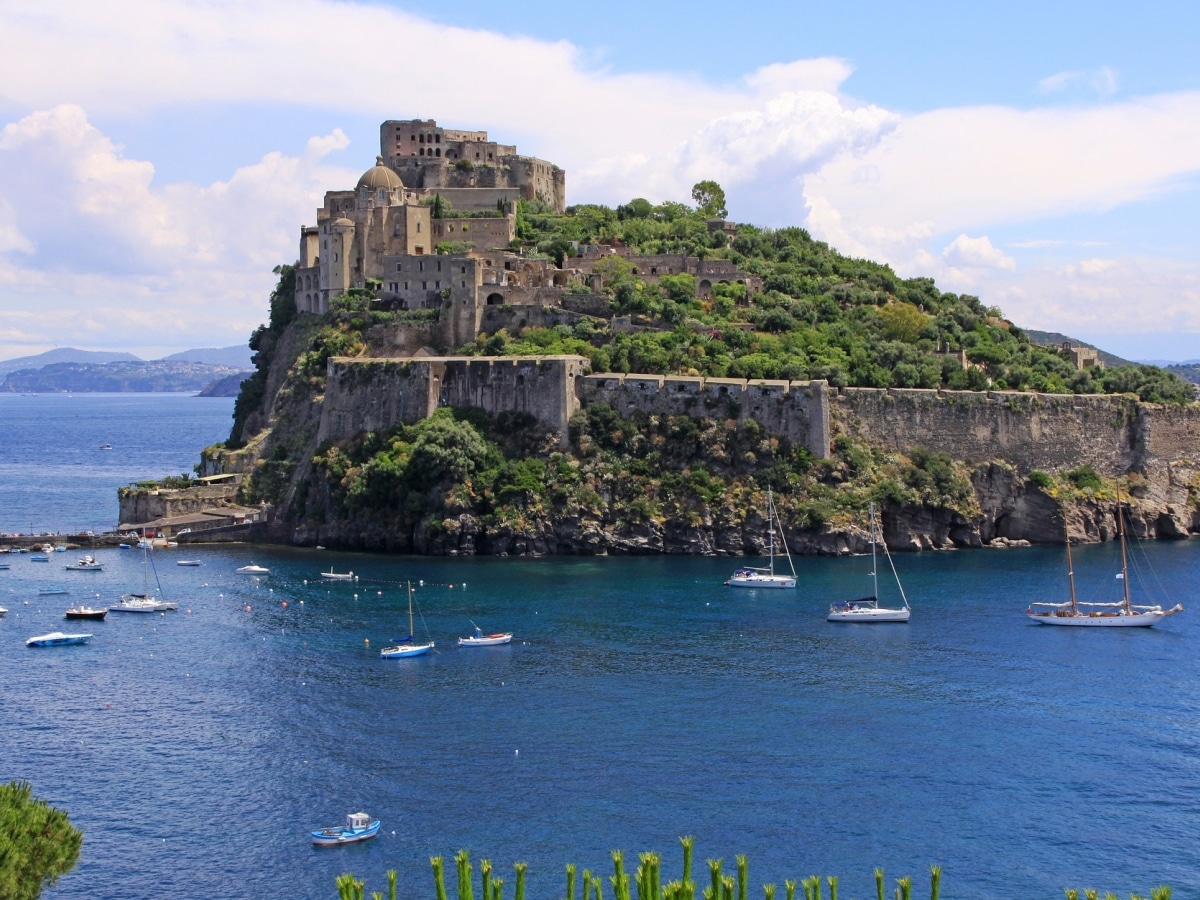
Why visit it?
Walking through the cobbled paths, the views open wide over the turquoise waters and the nearby villages. Ischia Ponte lies just below, its painted houses clinging to the shoreline. Further away, Barano d’Ischia hides between slopes of deep green. Each place whispers something—about fishermen, about old vineyards, about lives tied to the sea.
Inside, the castle reveals more than stone. There are ancient chapels, gardens suspended in the breeze, and shadowed crypts that still feel alive with memory. Stories echo here, like the tale of the nuns who lived cloistered behind these walls in the 17th century.
The fortress once stood at the heart of naval conflicts during the Renaissance, a crucial point for strategy and survival. Today, the exhibitions scattered through its halls let you wander back into those moments of history.
- Price: Around €12 per adult.
- Tip: Go late in the day. Watching the sun drop over the Tyrrhenian Sea from the ramparts stays with you.
2. The thermal baths of Ischia
Known for its volcanic origins, Ischia has drawn visitors for centuries with something less obvious than beaches—its hot, mineral-rich springs. Used since ancient times, the thermal waters still flow quietly beneath the surface, offering their warmth and their healing touch.
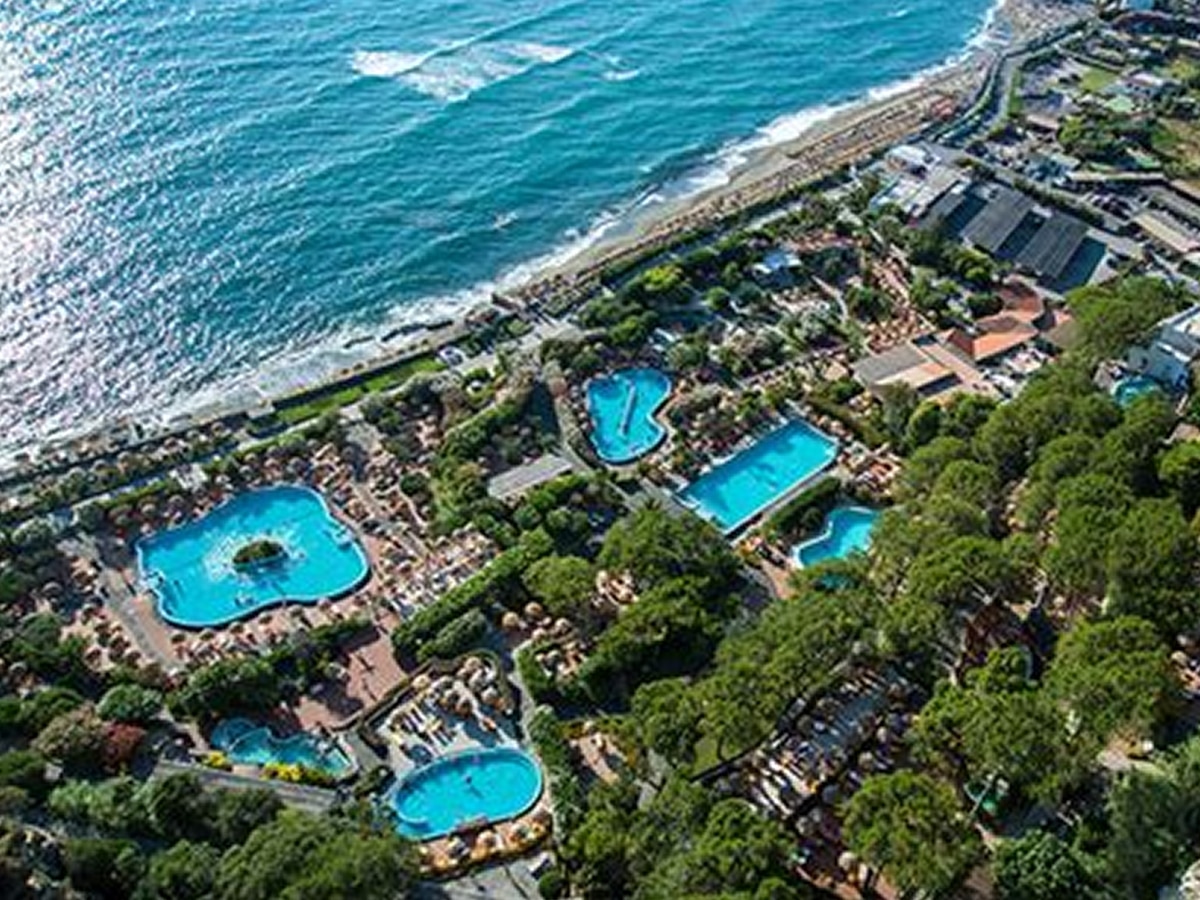
The best thermal baths
- Poseidon Gardens: A place that feels more like a world than a wellness center. Twenty-two thermal pools, tucked among trees and stone paths. Some are warm enough to slow the breath, others cooler—perfect before a swim in the sea just steps away.
- Negombo: Tucked into the San Montano Bay. Pools here disappear into the surrounding vegetation. Not flashy. Just peaceful. With a few modern treatments available if the body needs extra attention.
- Nitrodi: A quieter space. Fewer pools, more focus. Known for skin-healing properties. People come with intent, drawn by history—Roman texts once praised these waters as sacred. Some still come with that same reverence.
- Sorgeto Bay: No ticket, no gates. Just rocks, sea, and water bubbling up from the earth. Hot and salty, the springs meet the sea in a kind of natural balance. It’s raw here. Open to the sky, and to anyone willing to climb down the path. The water’s always warm, even in winter.
Massages, mud treatments, open-air pools—each place adds its own layer to the ritual. At Poseidon, there’s a massage that mixes local oils with practiced hands. At Nitrodi, thick grey mud cools the skin and leaves it softer than before. You won’t rush. That’s not how it works here.
Beyond wellness, there’s tradition. A sense that people have been soaking, resting, recovering here for a long time. And somehow, the land still knows how to care for them.
3. Dream beaches
Ischia’s beaches don’t follow one script. Some stretch wide under the sun. Others are tucked between hills, barely visible until you’re close. Sand, rocks, silence, crowds—it all depends on where the feet land.

- Maronti Beach: Long, golden, with space to wander and space to stop. Families tend to settle here. The nearby hot springs seep warmth into the shoreline. A few cafés nearby. Enough to stay all day without planning too much.
- Citara: Clear water, big sky, and those strange, sculpted rocks that pull photographers in. The Poseidon Gardens are just behind, which makes the beach a good halfway place—between sea and spa.
- San Montano: Quieter. A cove that feels hidden, even though it’s not. The green hills around it close the space in, softening the noise. Good for reading. Or naps. Or swimming in slow, easy strokes.
No need to choose just one. The island’s small enough to follow the sun—or the mood—and find the beach that fits.
4. Hike on Mount Epomeo: Spectacular panorama
At 789 meters, Mount Epomeo rises above everything else on the island. From below, it doesn’t seem that tall. But the climb changes things. The trees shift. The air grows thinner. Then, suddenly, there’s space again—and views that make you stop without meaning to.
- Recommended trails: Some start as dusty tracks through forest, then open into volcanic rock. A few pass by small farms—places where someone might offer cheese, wine, a slice of something still warm. Don’t rush. Let it happen.
- Photo tip: The summit at sunrise. It’s early, yes. But the light spills across the Bay of Naples, touches Capri, lingers on Procida. One of those views that quiets everything for a moment.
Locals still talk about Epomeo like it breathes. Its volcanic past isn’t ancient—it’s just beneath the surface. And in some stories, the mountain is more than a peak. It’s a keeper of secrets, and a reminder that this island never truly sleeps.
5. Sant’Angelo: Picturesque charm and authenticity
Tucked into the southern coast, Sant’Angelo doesn’t call attention to itself. It just waits. Small, slow-moving, full of color. The kind of place where time slips differently. Narrow streets wind between painted facades. The harbor curves gently, dotted with boats that haven’t changed much in decades.
There’s something quiet but proud in the air here. During the Fête de la Mer, locals fill the village with songs, processions, shared meals. It’s not a show—it’s habit, tradition, joy. The small piazzas come alive. And then, just as suddenly, return to calm.
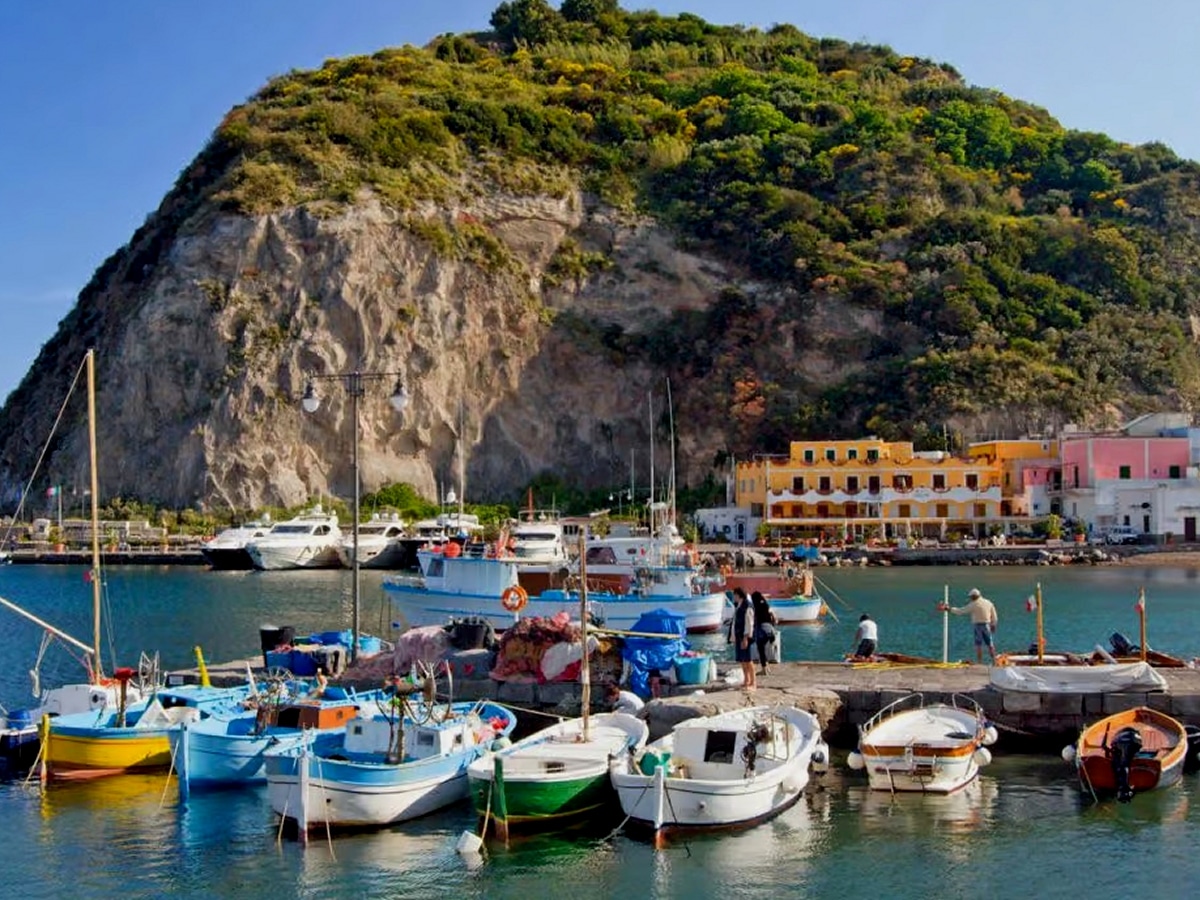
- Where to eat: Order spaghetti with sea urchins. Simple, salty, perfect. Most places sit along the harbor. Sit outside. Watch the boats. Let the meal stretch.
- How to get there: On foot or by boat. Water taxis drift in from other parts of the island—an easy, scenic way to arrive.
- Things to do: Wander. Browse the tiny artisan shops. Eat gelato along the quay, slowly.
6. Forio: Gardens, churches and sunsets
Forio carries more energy. It’s not loud—but it’s lived in. Markets hum in the morning. Cafés spill into the streets. There’s art, faith, sea, flowers, all layered close together. And light—especially toward the evening—falls in ways that photographers chase.
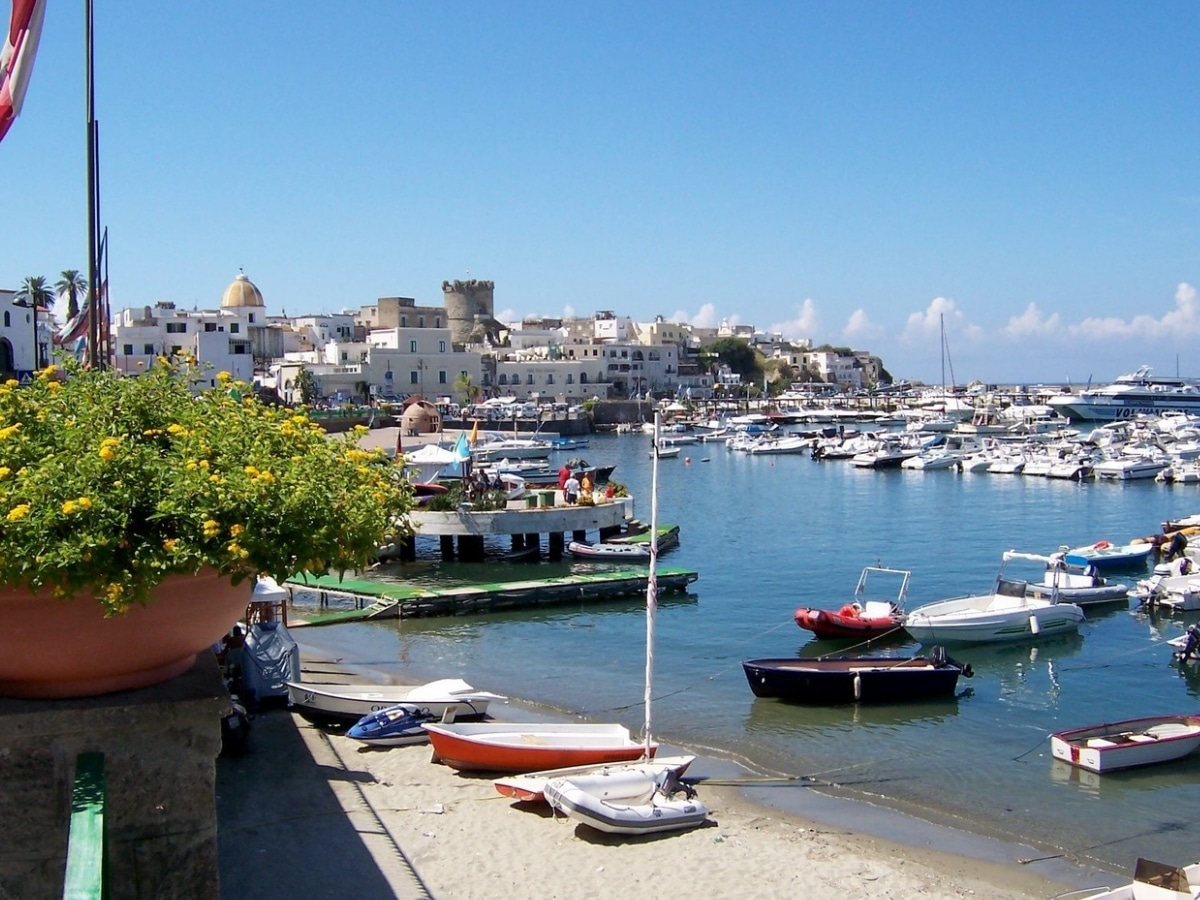
- Santa Maria del Soccorso Church: A white church that almost glows against the sea. Nothing complicated. Just balance—sky, architecture, silence.
- Le Torrione: A thick tower with a view, once meant for defense, now holding artwork and stories. Inside, it’s quiet. Outside, the sea spreads wide.
- La Mortella Gardens: Wild and careful at once. Built by a composer, filled with exotic plants and winding paths. In summer, music drifts through the trees. A place to wander without a plan.
- Sunsets: This is where Forio shines. Head to Il Tramonto, a bar perched just high enough. The colors come slowly—then all at once. Orange, pink, sea, silence. Just sit and watch.
7. Bosco della Maddalena: Nature and tranquility
If the island feels too busy, there’s this forest. The Bosco della Maddalena, deep in the center. Oaks, pines, filtered light. Birds in the branches. Nothing remarkable—until you let it be.
The trails curve without effort. Some lead to viewpoints with the sea far below. Others keep you in the green, with small signs pointing out plants or birds. There are benches. Picnic spots. Shade. You hear footsteps. Wind. Then quiet again.
It’s not grand. But it’s grounding. A part of Ischia that asks nothing, gives space.
8. The Zaro Belvedere
Near Forio, at the edge of the trees, the Zaro Belvedere opens suddenly. One moment: forest. The next: sky and sea.
It’s a place people come to think. Or pray. Or just breathe. A statue of the Virgin stands quietly here, watched over by locals and those who believe in something beyond the view.
From this high ledge, the coast stretches out. At sunset, it softens. The gold hits the water. The sky fades orange. Even those not looking for anything in particular tend to pause.
Because some places do that. And Zaro, somehow, always does.
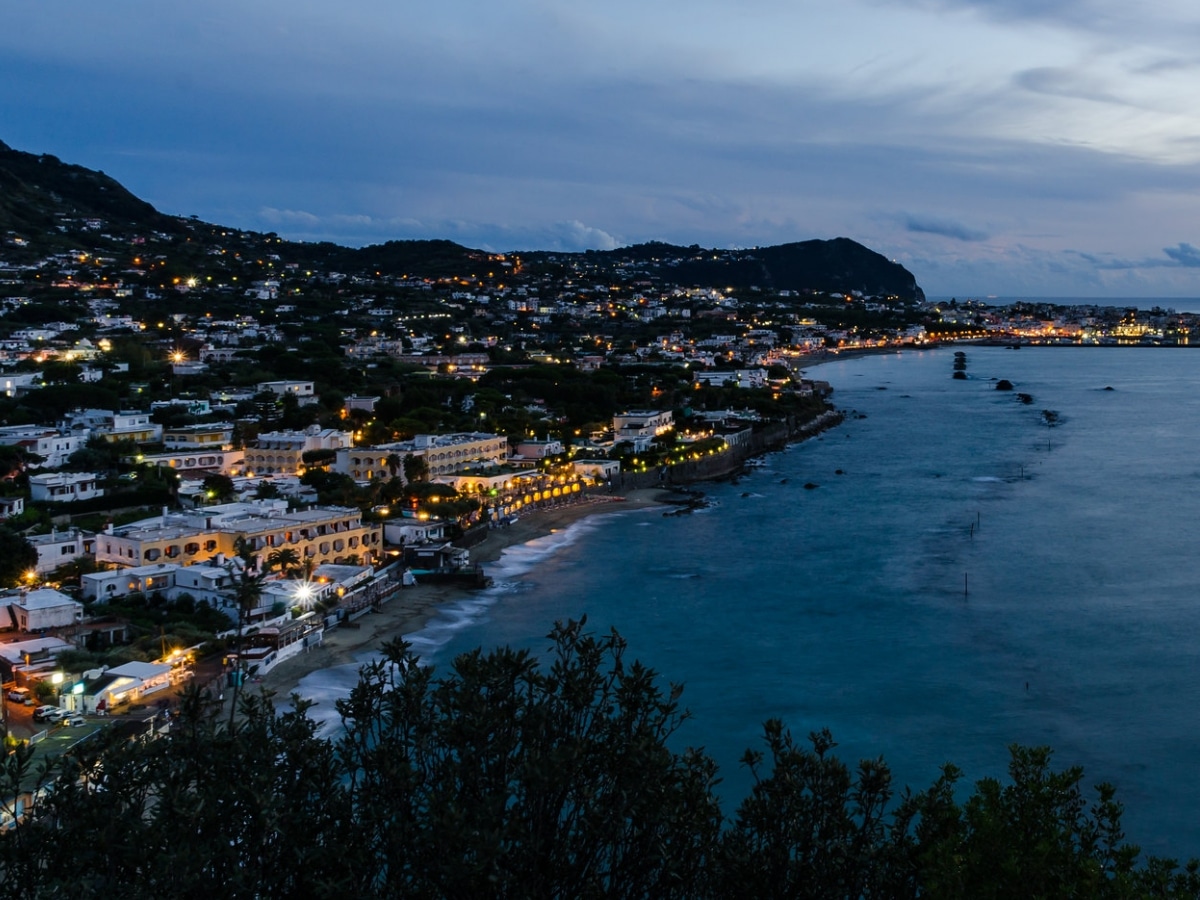
Activities and advice
- Walk in the Woods: The path to the Belvedere cuts through dense woodland. It’s quiet under the canopy—just leaves, footsteps, and the occasional bird call. Good for slowing down.
- Observation: Bring binoculars. The cliffs and forests are full of movement—birds in the branches, boats drifting far below the horizon.
- Tip: Late afternoon is the best time. Fewer people. Softer light. The sun begins to drop, and everything glows just a little longer.
9. The cliffs of Punta Imperatore
Down in the island’s southwest, Punta Imperatore doesn’t ask for attention—it commands it. Sharp cliffs drop into the sea without warning. Wind moves fast here. The lighthouse, still standing since the 19th century, holds its ground above it all.
The cliffs tell the island’s deeper story. Volcanic, rugged, shaped by time and fire. From the edge, the view spreads wide—just sea and sky, layered in blues. Photographers love it, but even without a camera, it’s hard to look away.

The cliffs of Punta Imperatore are famous for their fascinating geological formation, the result of Ischia’s past volcanic activity. The panoramic view from this point is spectacular, embracing the horizon and the infinite shades of blue of the sea. Photography enthusiasts will find it an ideal setting.
Activities and practical advice
- Lighthouse Tour: The doors stay shut, but the path around the lighthouse is open. A good place to stop, look, breathe.
- Hiking: Trails snake along the cliffs. Nothing too manicured. Just enough to feel the wild without getting lost in it.
- Stargazing: Far from city lights, the night sky stretches deep. On clear nights, it’s hard to leave once you’ve looked up.
Extend the wonder by exploring other treasures
Ischia doesn’t reveal itself all at once. There are layers—volcanic trails, quiet beaches, villages that still keep time differently. It’s a place for those who like to wander slowly. For those drawn to nature, healing waters, and the small beauty of everyday rhythms.
But the journey doesn’t have to stop here. If time allows, the sea offers other directions. Capri waits nearby, its cliff paths and the deep blue shimmer of the Grotta Azzurra calling for a different kind of awe. Procida, smaller and softer, leans into color and calm—painted houses, sleepy harbors, mornings that stretch.
Each island adds something. But they don’t compete. They speak quietly to each other across the water.
In the end, maybe that’s what stays with you. Not just the views or the names, but the way the light shifts on the sea, and how it feels to move slowly through places that don’t rush to be remembered.


